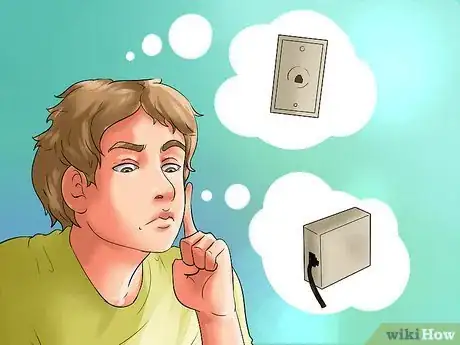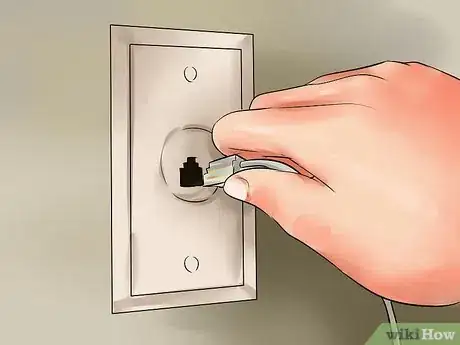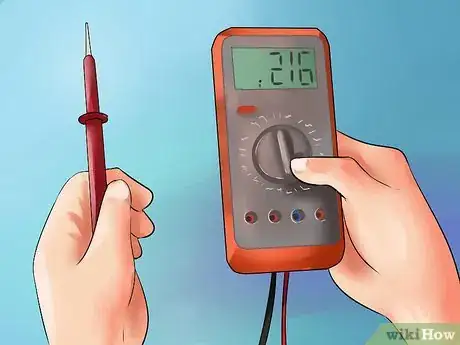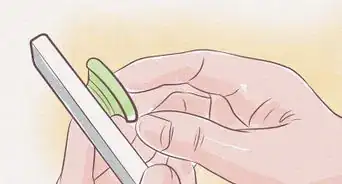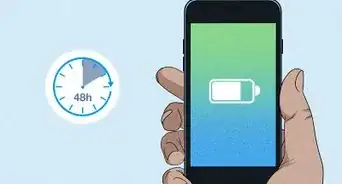X
wikiHow is a “wiki,” similar to Wikipedia, which means that many of our articles are co-written by multiple authors. To create this article, 11 people, some anonymous, worked to edit and improve it over time.
This article has been viewed 79,134 times.
Learn more...
Even though cordless phones are so common nowadays, it's often still useful to put in another phone jack. If you need a wired phone in a different room, have remodeled your kitchen, or even want to move your DSL router upstairs, you can pay the phone company a lot of money, or spend a few hours one afternoon and do it yourself. It's really very easy. This tutorial only presupposes a basic understanding of how electrical circuits works.
Steps
-
1Find where you want the phone jack. Clear it out and make sure you have room.
-
2Decide your endpoint. The best choice is a "home run" straight to the phone company's box, because any wire problems will only affect the one jack. However, if this will be difficult, you can run wire from the closest/easiest phone jack.Advertisement
-
3Decide on wire placement. You can run the wire along the walls or baseboard, but this can be messy. You can fish the wire through the walls, but this can range from time-consuming to nearly impossible. Or you can run the wire through an exterior wall and out along the roof. This is a decision for you to make. When you've figured it out, measure how much wire you need.
-
4Decide what type of box you want. The easiest is simply a surface-mount type, no drilling required. Most allow you to use screws, or even just stick it there with an included piece of double-sided tape. If you want something a little more professional looking, you can open up the wall a bit and install an electrical box to have a jack flush to the wall. This allows you to get a jack with posts for a wall-phone to hang from.
-
5Get your parts. You need wire and a jack. Also get a pair of small-gauge wire strippers, and a Phillips and flat-head screwdriver if you don't already have them. Be sure to get extra wire! You do not want to end up short. By the time this is all done, you want to end up with at least 10 extra feet of wire. But you need more spare wire the longer the distance, since small deviations from your estimate will magnify with distance. For a 50' run, get 65', and for a 100' run get 125', and so on.
- If you're surface-mounting the wire (running it along the baseboard, for example) be sure to get fasteners. For rougher work, they sell nails with clips that you can push a wire into. For finish work, like in a bedroom for example, they sell small finish staples. Whatever you get, make sure it's not likely to cut into the wire.
-
6Now that you have your parts, go ahead and install the wire. Start at your starting point (the demarcation or terminal point, or the nearest phone jack), run the wire through or along the wall to the location of your new jack. Leave 5 extra feet at the start, and there should be plenty of cable at the other end. Affix the cable as necessary.
-
7Start the Wiring. Start at the new jack. Cut the wire to length (measure twice) and strip off the last 2 or 3 inches (5.1 or 7.6 cm), taking care not to nick the wires. You probably have two pairs of wire. Separate out the blue/white stripe and white/blue stripe wires (or, if you don't have them, the red and green wires) from the rest and strip off the last inch or so of insulation. Be careful! Then wrap these two wires around the screw terminals corresponding to the first line (refer to the jack's documentation) and tighten the screws. Don't close up the box or affix it to the wall yet!
-
8Repeat at the other end of the wire, connecting to the appropriate two terminals on the inside terminal or demarcation point. If you're feeding off an existing jack, open it up, unscrew the two wires, twist them around the new wires, and re-tighten back to the terminals (and confirm the jack still works).
-
9Test your new jack, which should now be working. If it is, attach the new jack securely with screws or adhesive, and close it up.
Advertisement
Method 1
Method 1 of 1:
Troubleshooting
-
1If your other phones are still working (all of them for a home run, or the one at the jack you tapped from), check your new jack's wiring. Use the documentation to make sure you've attached your two wires to the right terminals. You may be able to unscrew the wires and hold them against different terminals with the phone off-hook to see if you hear a dial tone.
-
2Get a multimeter and test the wire. You're looking for voltage between the two wires you've been using, which should be about 48 volts DC.
-
3If all else fails, check the wire itself - you want to check for continuity between at least the pair of wires you're using, and the same colors on the opposite end.
-
4If you give up, call your phone company or an electrician.
Advertisement
Warnings
- The electricity on this line is pretty safe. When a phone is on-hook, no electricity flows. When a phone is off-hook, about 48V DC flows - safe enough to touch. But when the phone rings, the voltage changes to 90V AC, which is pretty close to what you have in a normal power outlet. If you're concerned by this, disconnect your phone line at the demarcation point while you're doing the wiring. If you open up the box outside, you should find a plug with a short phone cord. Unplug that and you'll be set.⧼thumbs_response⧽
Advertisement
Things You'll Need
- Wire strippers
- Phillips and flat head screwdrivers
- (Recommended) Multimeter
- Phone cord
- Phone jack
About This Article
Advertisement



